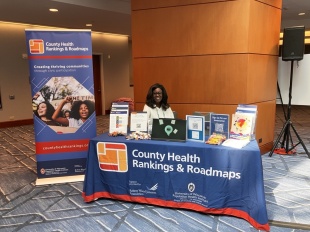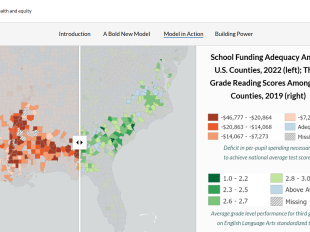This Year’s Rankings Show Differences in Health and Opportunity by Place and Race
For nearly a decade, our annual County Health Rankings have shown that where we live makes a difference in how well and how long we live. This year, our analyses find that meaningful health gaps persist not only by place, but also by race and ethnicity.
These gaps are largely influenced by differences in opportunities – from a lack of access to quality health care to a lack of safe, affordable housing – that disproportionately affect people of color. This year’s Key Findings Report shows some troubling trends that stand in the way of good health:
- There is an alarming pattern of racial disparity among low birthweight babies. Low birthweight is a key indicator of quality of life for mothers and babies. After nearly a decade of improvement, we are seeing more babies born at low birthweight (8.2% in 2016, a 2% increase from 2014). A pattern of disparity by race can be seen across the nation, with poor birth outcomes more likely among Blacks. Compared to White babies, Black babies are twice as likely to be born at low birthweight and about twice as likely to die before their first birthday.
- Segregated communities of color are more likely to be cut off from opportunities for health. Research shows that residential segregation is a fundamental cause of health disparities in the U.S. This year’s report shows Blacks in more segregated counties fare worse in rates of child poverty, infant mortality, and high school graduation rates than Blacks in less segregated counties.
- A heavy burden of poverty falls on children of color. Today, 1 in 5 children grow up in poverty in America. Available data show that, for the majority of U.S. counties, child poverty rates for American Indian/Alaskan Native, Black, and Hispanic children are higher than rates for White children, and these rates are often twice as high.
- There have, however, been positive strides in teen birth rates. Teen birth rates have been declining across urban and rural communities and racial groups for more than a decade. Hispanic teens have seen the most improvement in birth rates, falling from 77.7 to 31.9 births per 1,000 females, ages 15-19, from 2006 to 2016. Black and American Indian/Alaskan Native teens have also seen notable improvements.
The good news is we can work together to find solutions to reduce these health and opportunity gaps and build on some of the progress communities have seen in reducing teen birth rates. Everyone deserves a fair and just shot at a healthier life, regardless of where they live, how much money they make, or the color of their skin. This year’s Rankings are a call to action for communities to come together and address barriers to good health.
Visit County Health Rankings to learn more about what’s happening in your community and explore the Take Action to Improve Health resources for policies and strategies to consider.



